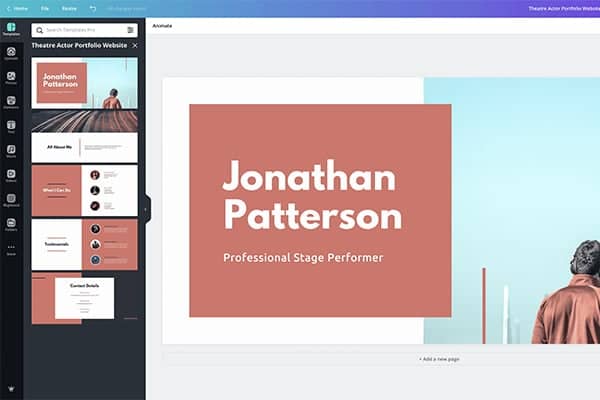Why Website Design in copyright Is Essential for Creating a Strong Online Presence
Why Website Design in copyright Is Essential for Creating a Strong Online Presence
Blog Article
Achieve Online Success With User-Friendly Website Style
In the significantly competitive digital landscape, the style of a web site can be a critical factor in establishing an organization's success. User-friendly design not just improves the general user experience however additionally affects crucial metrics such as conversion, interaction, and retention prices. By prioritizing intuitive navigating and availability, companies can cultivate an extra comprehensive environment that interest a more comprehensive audience. Nonetheless, understanding the specific concepts and attributes that contribute to efficient layout needs a better exam of existing fads and ideal practices, which might reveal chances for substantial enhancement.
Significance of User Experience
User experience (UX) plays a pivotal duty in the success of a web site, as it straight affects customer satisfaction and engagement. A positive UX makes sure that visitors can navigate the site easily, accessibility info promptly, and total desired actions, such as making an acquisition or signing up for a newsletter, without irritation.
In an electronic landscape where competitors is tough, a site that prioritizes UX can considerably improve brand name loyalty and retention. Customers are a lot more most likely to return to a site that supplies a smooth experience, producing a cycle of repeat check outs and raised customer life time worth. Reliable UX design can decrease bounce prices, as customers are less likely to leave a site that satisfies their demands effectively.
In addition, search engines increasingly think about individual experience aspects when ranking internet sites. Thus, spending in customer experience is vital for achieving lasting success in the electronic market.
Key Principles of User-Friendly Design
An effective easy to use style depends upon a number of essential principles that improve usability and ease of access. Is simplicity; a clutter-free interface enables users to navigate effortlessly, lowering cognitive lots. This concept highlights the value of clear and succinct web content, allowing individuals to discover details promptly without unneeded diversions.
Uniformity is one more vital component. Regular use shades, designs, and font styles cultivates familiarity and constructs trust. Individuals ought to really feel comfy as they check out various sections of the internet site, understanding that comparable aspects signify associated capabilities.
Effective typography additionally plays a vital role in user-friendly style. Legible fonts, appropriate dimensions, and ample spacing ensure that web content is conveniently readable across various tools. Incorporating user-friendly aesthetic power structures helps users determine crucial information and actions at a glimpse.

Necessary Features for Navigating
Effective navigating is vital for any type of user-friendly website, as it straight affects the general user experience. A well-structured navigating system allows individuals to find info rapidly and efficiently, lowering aggravation and enhancing interaction.
One crucial function is a instinctive and clear food selection that classifies web content logically - website design copyright. This food selection needs to be conveniently obtainable from every web page, commonly placed at the leading or on the side of the internet site. In addition, including breadcrumb navigating aids customers recognize their area within the website hierarchy and makes it easier to backtrack
Search performance is another essential element, allowing users to locate details web content without looking with multiple web pages. This function ought to be plainly presented and responsive to variations in input.
Moreover, a mobile-responsive style makes sure that navigation stays seamless throughout tools. As mobile use remains to rise, menus ought to adjust to various display sizes without compromising capability.
Finally, visual her explanation hints such about his as highlighting the active web page and utilizing hover effects can enhance customer communication. By integrating these important attributes, web site designers can produce a navigational experience that is not only straightforward however additionally motivates exploration and retention.
Accessibility Factors To Consider
Access considerations are indispensable to developing an user-friendly site that deals with all people, no matter their abilities or impairments (website design copyright). Web sites have to be created to make sure that customers with visual, auditory, cognitive, or electric motor problems can involve with content properly. This starts with adherence to the Web Material Access Guidelines (WCAG), which provide a framework for making electronic web content much more easily accessible
Key practices include making use of detailed different text for pictures, making sure shade comparison ratios meet ease of access criteria, and giving captions for multimedia aspects. In addition, the navigation ought to be user-friendly, allowing individuals to tab through links and interactive components conveniently. Executing keyboard navigation is critical for those incapable to use a mouse.
Additionally, clear and succinct language improves comprehension for users with cognitive restrictions. Types ought to be straightforward, with labels and instructions that are understandable. Regular availability testing, including individual comments from people with handicaps, can help enhance and determine barriers usability.
Gauging Layout Success

User feedback studies and functionality testing are important in analyzing the performance of layout click to investigate aspects. These methods allow designers to collect straight input from customers, recognizing pain points and locations for renovation. Additionally, tracking heatmaps can expose where individuals click most regularly, assisting to inform layout adjustments and material prioritization.
Analytics tools play an important duty in gauging style success by providing data-driven understandings. For example, Google Analytics can track user actions, disclosing patterns that suggest whether the design is hindering the customer or facilitating journey. Ultimately, a successful website style not only fulfills service goals however also cultivates a pleasurable and seamless customer experience, driving engagement and loyalty in time. Frequently reviewing these metrics ensures that the internet site develops abreast with user requirements and sector ideal practices.
Final Thought
Prioritizing user experience via simplicity, intuitive navigating, and efficient feedback devices not just enhances customer interaction and complete satisfaction but additionally promotes brand name loyalty. Including necessary navigation attributes and availability considerations better guarantees that all customers can successfully interact with the website.
Websites have to be developed to ensure that customers with visual, acoustic, cognitive, or motor problems can involve with material efficiently.Measuring layout success entails evaluating just how successfully an internet site meets its desired objectives while supplying a favorable individual experience. Google Analytics can track customer behavior, exposing patterns that show whether the layout is promoting or hindering the customer trip. Ultimately, a successful internet site design not only satisfies organization objectives however additionally fosters a smooth and pleasurable user experience, driving interaction and loyalty over time. Focusing on individual experience through simpleness, user-friendly navigation, and effective responses mechanisms not just improves user engagement and fulfillment yet additionally fosters brand loyalty.
Report this page